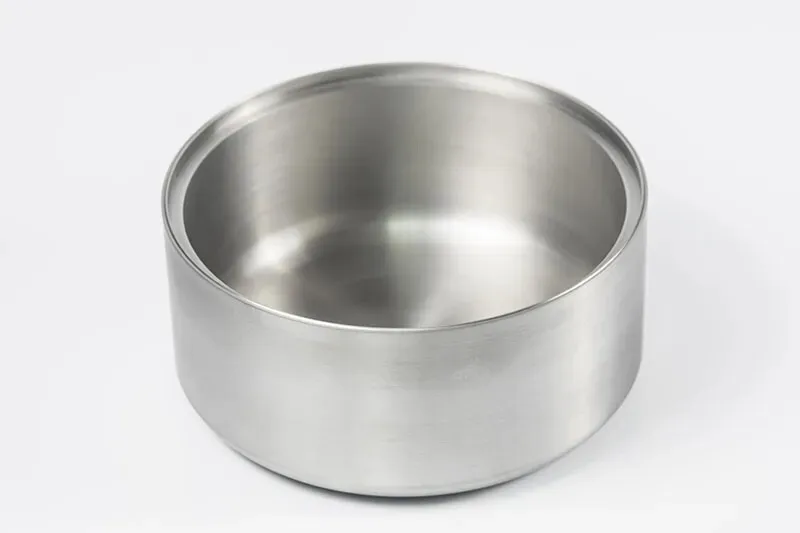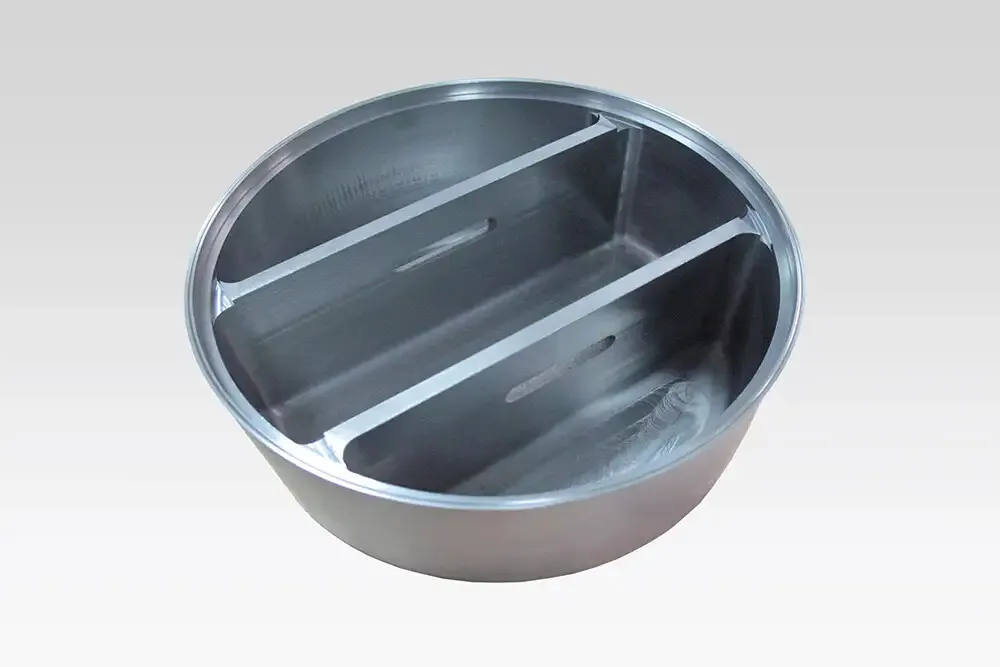Molybdenum crucibles and tungsten crucibles are both made from refractory metals, which means they can withstand extremely high temperatures. The main differences lie in their specific physical properties, particularly their melting point, density, and subsequent applications where those properties are most critical.
|
Feature |
Molybdenum (Mo) Crucible |
Tungsten (W) Crucible |
|
Melting Point |
~2623 °C (4753 °F) |
~3422 °C (6192 °F) (Highest of all metals) |
|
Max. Usable Temperature |
Up to ~1800 °C |
Up to ~2800 °C |
|
Density |
10.2 g/cm³ (Lighter) |
19.3 g/cm³ (Much Heavier, similar to gold) |
|
Cost |
Less Expensive |
Significantly More Expensive |
|
Machinability |
Difficult, but more workable than W |
Extremely Difficult and brittle at room temp |
|
High-Temp Strength |
Excellent |
Superior (maintains strength at higher temps) |
|
Chemical Inertness |
Very good, inert to many molten glasses/salts |
Excellent, generally more inert than Mo at extreme temps |

1. Melting Point & Maximum Operating Temperature
This is the most critical difference.
Tungsten: Has the highest melting point of any metal at 3422 °C. This allows tungsten crucibles to be used in the most extreme temperature applications, with a maximum operating temperature in a vacuum or inert atmosphere of around 2800 °C.
Molybdenum: Has a very high melting point of 2623 °C, but it is significantly lower than tungsten's. Its maximum practical operating temperature is around 1800 °C, sometimes pushed to 2000 °C in a controlled environment.
Conclusion: If your process temperature exceeds 1800 °C, tungsten is your only choice.
2. Density & Weight
Tungsten: Is one of the densest metals (19.3 g/cm³), making tungsten crucibles very heavy. This requires more robust support structures in a furnace and can make handling more difficult.
Molybdenum: Is also dense, but significantly less so than tungsten (10.2 g/cm³). For a crucible of the same size, a molybdenum one will weigh roughly half as much as a tungsten one.
Conclusion: Molybdenum is advantageous where weight is a concern.
3. Cost
Tungsten: The raw material is more expensive, and its extreme hardness and brittleness make it incredibly difficult and time-consuming to machine. This fabrication difficulty drives the cost of a finished tungsten crucible up significantly.
Molybdenum: The raw material is less expensive, and it is comparatively easier to machine and form (though still challenging compared to steel). This makes molybdenum crucibles a much more cost-effective solution.
Conclusion: Molybdenum is the far more economical choice if its temperature limits are sufficient for the application.
4. Machinability and Fabrication
Tungsten: Is notoriously difficult to work with. It is very hard and brittle at room temperature, which can lead to cracking during machining. This limits the complexity of crucible designs and increases manufacturing costs and lead times.
Molybdenum: While still a hard metal, it is more ductile and machinable than tungsten. It can be formed into more complex shapes with greater ease, and fabrication is generally faster and cheaper.
Conclusion: For custom or complex crucible designs, molybdenum is the more practical material.
5. High-Temperature Strength and Creep Resistance
Both metals have excellent strength at high temperatures, but their performance differs at the extreme end.
Tungsten: Retains its structural integrity and has superior creep resistance (resistance to deforming under long-term stress) at temperatures where molybdenum would begin to soften and deform.
Molybdenum: Has excellent high-temperature strength but will start to lose it as it approaches its upper temperature limit (~1800 °C).
Conclusion: For applications involving heavy loads or long-duration high-temperature exposure above 1800 °C, tungsten's superior strength is essential.
6. Chemical Compatibility
Both metals are highly resistant to chemical attack from many molten materials, but there are subtle differences.
Tungsten: Is generally considered more inert than molybdenum, especially when in contact with highly reactive molten metals and ceramics like alumina (Al₂O₃) and zirconia (ZrO₂) at very high temperatures.
Molybdenum: Is excellent for melting quartz glass, certain ceramics, and in non-oxidizing environments. However, it can be more reactive than tungsten with some molten metals.
Important Note: Both metals will oxidize rapidly in the presence of air at high temperatures. Therefore, they must be used in a vacuum or an inert gas atmosphere (like argon or nitrogen).

Molybdenum Crucibles:
Sapphire Crystal Growth: A major application, especially for the Kyropoulos (KY) method.
Quartz Glass Melting: Used to melt high-purity quartz.
Vacuum Furnace Components: Used as heating elements, heat shields, and sintering trays.
Sintering of Ceramics and Powdered Metals: Where temperatures are typically below 1800 °C.
Tungsten Crucibles:
High-Temperature Crystal Growth: For materials with melting points higher than sapphire, or for specific sapphire growth methods requiring temps >2050 °C.
Melting of Refractory Metals and Ceramics: Melting materials like alumina, zirconia, and other high-temperature oxides.
Semiconductor Industry: Used in processes like ion implantation where extreme purity and temperature resistance are needed.
High-Temperature Furnace Components: For furnaces that operate well above 2000 °C.
Start with Temperature: Is your process temperature consistently below 1800 °C? If yes, choose Molybdenum. If it's above 1800 °C, you need Tungsten.
Evaluate Your Budget: If Molybdenum can handle your temperature requirements, it will almost always be the more economical choice.
Check Chemical Compatibility: Verify the reactivity of your melt material with both Mo and W. For some very aggressive melts or ultra-high purity requirements,
Tungsten may be necessary even at lower temperatures.
Consider the Design and Weight: If you need a large or complex crucible, the lower weight and better machinability of Molybdenum are significant advantages.
In summary, molybdenum (Mo) and tungsten (W) are both refractory metals, meaning they have exceptionally high melting points and are ideal for high-temperature applications. However, they have distinct properties that make them suitable for different scenarios.
Share this page
If you have any product needs or questions, please leave us a message for consultation.
TEL: 86-18623759992
jason@bettmetal.com
Innovating Materials
for a Brighter Future